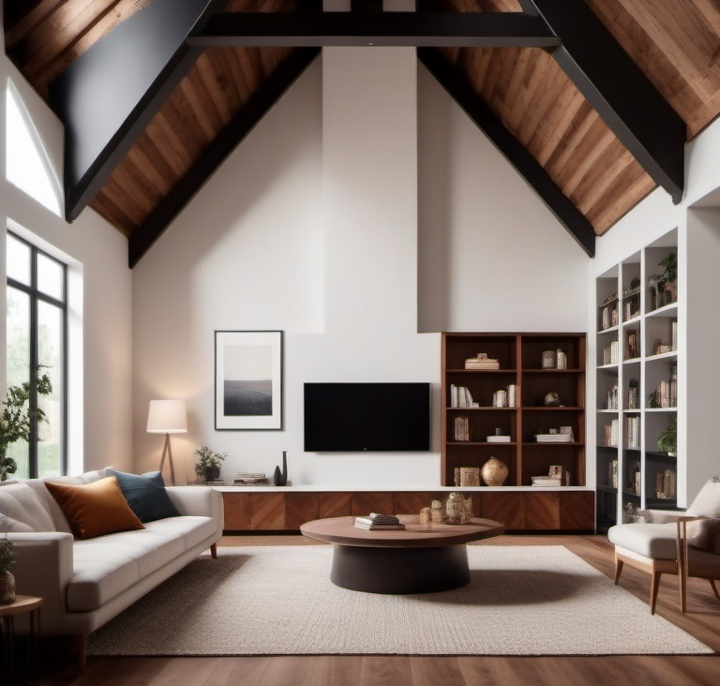The Power of Purpose: Intentional Choices for Inspired Interiors
In a world filled with trends and fleeting styles, the concept of intentional interior design stands as a timeless approach to creating spaces that truly resonate with our essence. Beyond mere aesthetics, intentional design is a deliberate journey that merges form and function, turning each corner of your home into a reflection of purpose and meaning. Let's explore the art of intentional interior design and how it transforms spaces into havens of authenticity.
Understanding Intentional Interior Design
At its core, intentional interior design is about more than just choosing furniture and decor. It's about infusing purpose into every design decision, carefully considering how each element will align with your lifestyle, values, and personal narrative. By thoughtfully curating every aspect of your space, from the color scheme to the furniture layout, you can create an environment that not only reflects who you are, but also supports your daily activities and enhances your overall well-being. Whether it's selecting pieces that have sentimental value, incorporating sustainable materials, or optimizing the flow of energy throughout the room, intentional interior design is a deeply meaningful process that goes beyond mere aesthetics. It's about crafting a space that truly resonates with you and tells your unique story.
Here's how you can embark on this intentional journey:
1. Define Your Purpose
Before selecting color palettes or furniture pieces, take a step back to define the purpose of each space. Ask yourself how you want to feel in that room and what activities it will host. Whether it's a serene sanctuary for relaxation or an energetic hub for creativity, clarity on purpose becomes the foundation of intentional design.
2. Curate Meaningful Connections
Every element within your space should tell a story or evoke a cherished memory. From family heirlooms to travel souvenirs, infuse your home with items that hold sentimental value. These meaningful connections not only enrich your surroundings but also contribute to a narrative that is uniquely yours.
3. Mindful Material Selection
Intentional design extends to the materials you choose. Opt for sustainable and eco-friendly options whenever possible, aligning your space with values that extend beyond its walls. Whether it's reclaimed wood, organic textiles, or energy-efficient appliances, each choice makes a statement about your commitment to a conscious lifestyle.
4. Balance and Harmony
Create a sense of balance by considering the flow of energy within each space. Intentional interior design involves arranging furniture, colors, and decor in a way that fosters harmony. Think about how each element complements the others to create a cohesive and inviting atmosphere.
5. Functional Beauty
Beauty should not compromise functionality. Choose furniture and layouts that serve a purpose and enhance the usability of a room. Intentional design finds the sweet spot where form meets function, ensuring that every piece contributes to the overall harmony of the space.
6. Cultivate Mindful Living
Intentional interior design extends beyond aesthetics—it's a lifestyle. Consider spaces that encourage mindfulness and well-being. Create designated areas for relaxation, meditation, or hobbies. Infuse your home with elements that promote a sense of calm and introspection.
7. Quality over Quantity
In the pursuit of intentional design, prioritize quality over quantity. Each piece should be selected with care and longevity in mind. Thoughtful investments in well-crafted, timeless items result in a space that withstands the test of time, both in durability and aesthetic appeal.
8. Adaptable Spaces
Recognize that your needs and preferences may evolve. Design your spaces to be adaptable, allowing for changes in function or style without compromising the overall intentional design. This flexibility ensures that your home remains a dynamic reflection of your journey.
Incorporating Intentional Design Principles
Now that we've explored the foundations of intentional interior design, let's delve into specific areas where intentional principles can be applied:
Color Psychology: Choose colors based on their psychological impact, aligning them with the mood and purpose of each space.
Furniture Arrangement: Arrange furniture to encourage social interaction, flow, and functionality, keeping the purpose of the space in mind.
Declutter Mindfully: Embrace minimalism and decluttering, retaining only items that serve a purpose or bring joy.
Lighting Design: Illuminate spaces strategically to enhance mood and functionality, considering both natural and artificial light sources.
Nature Integration: Integrate natural elements like plants, sustainable materials, and large windows to foster a connection with the outdoors.
Your Home, Your Narrative
In the realm of intentional interior design, every room becomes a canvas where your story unfolds. It's a mindful journey that transcends trends, inviting you to curate a space that mirrors your values, passions, and aspirations. By infusing purpose into every decision, intentional design turns your home into a sanctuary—a reflection of the authentic narrative that is uniquely yours. Craft harmony, live with intention, and let your home tell a story that resonates with the essence of your being.

